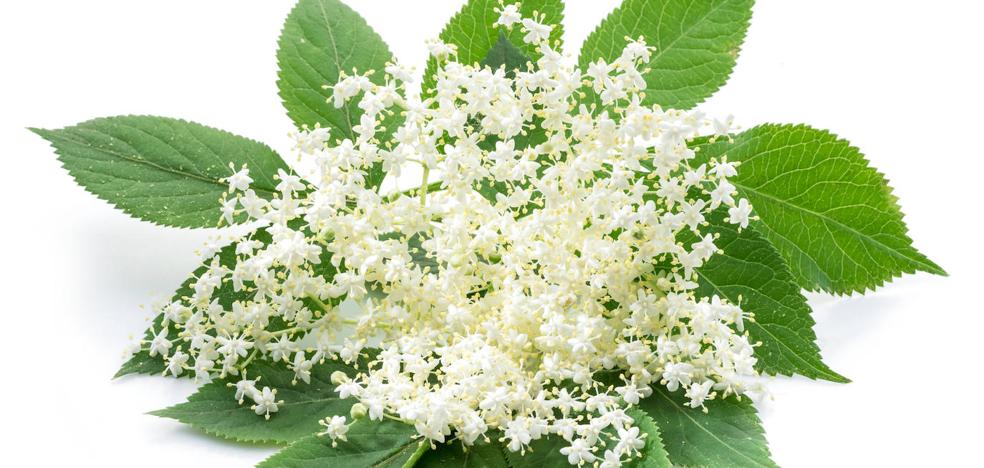
We often use flowers in the kitchen for aesthetic reasons, although some, such as jasmine, orange blossom, violet or rose and queen of all, saffron, have been used for centuries for their aromatic qualities. Humble Sayuguina, the flower of old, cannot compete with those queens of perfume. In fact, some people detect notes of ammonia in this little white flower, while most find only a delicate floral note.
But, despite its humility, the shock (Sambucus nigra) is considered to be one of the oldest cultivated trees in Europe for its many medicinal qualities. So much so that the presence of elders indicated the proximity of human settlements in areas such as the Pyrenees. Of course, there were no on-call pharmacies before and the boundaries between food and medicine were much more blurred.
Various parts of the shock have been used for therapeutic purposes, including bark, but only two are edible: flowers and berries. The berries appear in summer and are tiny balls that form groups. When ripe, they take on the same color as blackberries (when green, they are toxic) and can be used for jams and jellies or to add color and flavor to liqueurs or vinegars.
But the flowers are the most popular and in addition to being used in syrups and infusions to combat colds, infections or rheumatism, they were eaten in dough and fried, mixed into biscuits or jams and also raw in salads. Interestingly, the current cultivation is mainly intended for pharmaceutical use, but it is one of the cases in which it would be interesting to recover the traditions.

Preservation and recipes
Older flowers, in addition to having a good aroma and aroma, have many medicinal uses. If you want to use them for infusions, let them hang upside down to dry and then keep them in a sealed jar. If you dare to cook, here are two recipes:
Flower boys: Once the flower balls have been washed and drained, without removing them from the twigs, they are passed through a dough that we will make by mixing 180 grams of wheat flour, 70 grams of corn flour , 16 grams of fresh baker’s yeast dissolved in 250 milliliters of warm milk, 1 egg, a pinch of salt and 1 teaspoon of honey. Fry in plenty of oil at 180 ° C, sprinkle with icing sugar and serve. “Beignets de fleurs de sureau” (elder fruits) are a traditional dessert in countries such as Romania, Hungary or Ukraine and are also prepared in France.
Jam: Wash well and separate 350 grams of elderflower from the stems. In addition, make a syrup by heating 1 kilogram of sugar in 1 liter of water in a large pot and let it simmer over medium heat for about 20 minutes. After this time, add the flowers and the juice of half a lemon and cook over low heat for another half an hour. Pour into sterilized jars, cover and boil in a water bath for half an hour to keep. It has a delicate aroma that goes well with cheeses and curd.